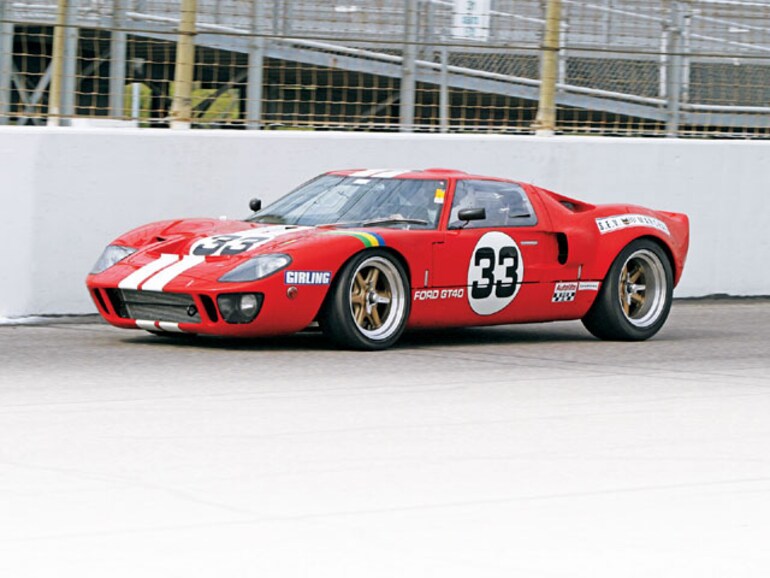Ray Maserang's RCR40 MkI & Dean Lampe's RCR40 MkI
By D. Brian Smith & in the GT40 Replica Owners' Own Words
Photography: D. Brian Smith
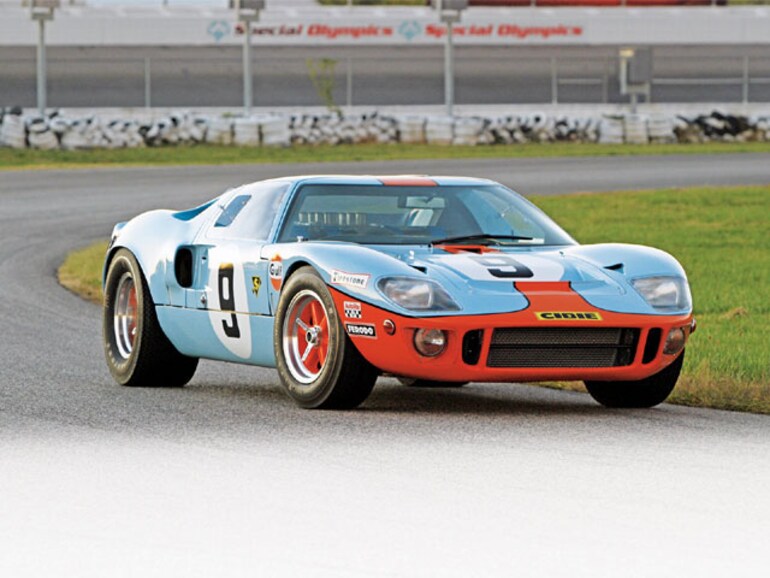
#1075 Reborn My fascination with the GT40 goes all the way back to my childhood. As a young boy hanging around the family body shop, Walnut Park Auto Body in Crestwood, Missouri, I would ask lots of questions. "What's that?" "What kind of car is that," and so on. The one time that sticks out in my mind is when I saw a Ford Motorcraft parts box. It was wrapped up in the blue package with a GT40 smeared as if it was moving at Mach speed. I asked my Dad what kind of car it was. He responded that it was a GT40. That's where my love for the car began. A few years later I saw a real GT40 at the Indy 500 museum. All the hair on my body stood on end.
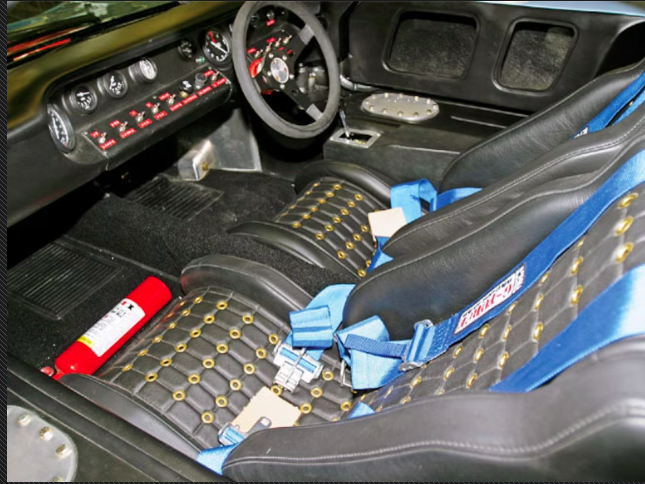
Now fast forward to 2006, a friend bought my 1965 Corvette that I had owned for 13 years. A door opened for me to buy my dream car, a GT40. Imagine that. I sold the ultimate Chevrolet to buy the ultimate Ford. I found Fran Hall, a race car manufacturer, and owner of Race Car Replicas, in Clinton Township, Michigan, and ordered a GT40 MkI. Its aluminum monocoque chassis sold me, as well as the accuracy of the body. To me there was only one car to replicate-chassis #1075-the '68 and '69 Le Mans winning car built by JW Racing in 1968. I know many people pick this combo, but I wanted to go a step further. I started buying most every book about GT40s and researching chassis #1075. I wanted to recreate the 1968 winner.
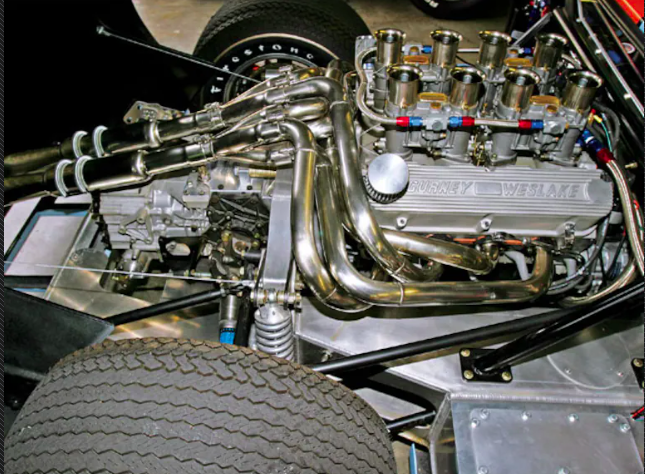
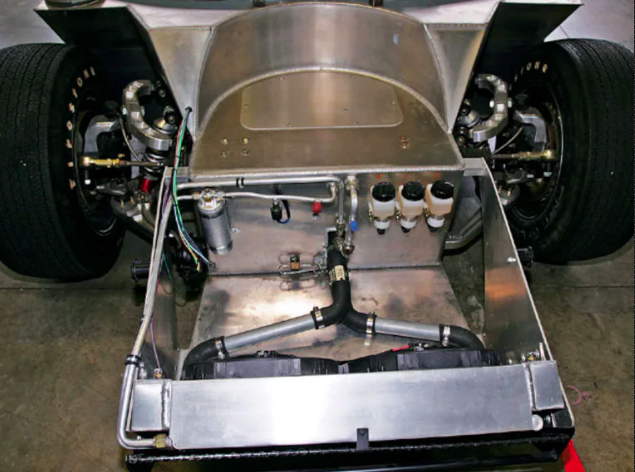
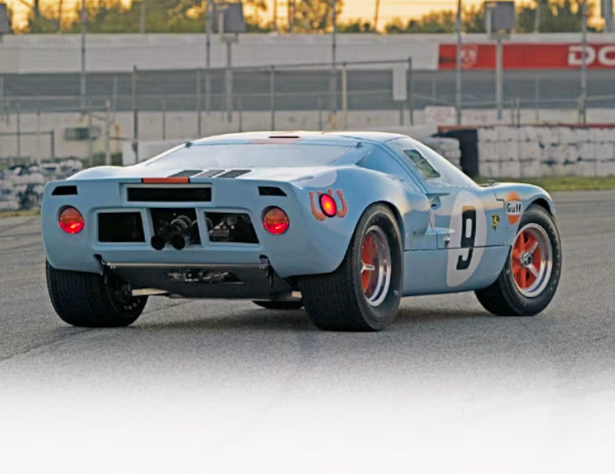
After I picked my car up in Michigan during a snow and ice storm in March 2007, I brought it home to our family body shop and got to work. I started by shaping and forming the quarters. Then molds were pulled and the quarters were laid up by hand. I grafted them into the rear clip and rockers to replicate the 1968 flares, not the 1969. There's a big difference. I also closed up the left fuel cap hole and fabricated a transfer tube from right cap to fill the left tank per Le Mans specifications. I also added the Gulf unique roof louver to ventilate the driver seat. I also fabricated the Gulf-only door handles to mimic the original slide-bolt type to enable a quick entry on the Le Mans start. My next step was to add the red identification light on the right quarter panel. Gulf cars ran these to help identify cars at speed; the light came from a British WWII bomber. I also installed the Firestone Indys. Another safety and roof strength feature was to split the outer and inner roof and build a chrome-moly birdcage web inside the outer and inner fiberglass skins. I then sistered it down the A-pillar and bolted it to the top of the dash framework. The inner and outer skins were glued back together to completely hide all tubing and ensure as much headroom as possible, as I need it to accommodate my seated 6-foot, 2-inch frame. The body was primed in DuPont's finest primer and then in '65 Triumph Powder Blue basecoats. The stripe was taped off, sprayed Triumph Marigold, and then three coats of DuPont's 7900 clear was applied. The car was lightly sanded and buffed. To finish it off Don Pfitzinger at Pfitzinger Graphics reproduced all the decals and installed them.
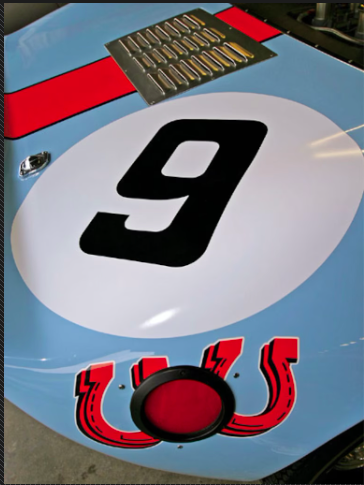
As for the engine, I went with Fords' best crate small-block. It's a Boss 347ci with AFR 185 fully CNC-ported heads; Crane roller rockers; Z 303 roller cam; and, for the spark, an MSD distributor and ignition system. The intake is from Redline with 8-48mm Weber IDAs. The gearbox was a no-brainer. It had to be a ZF from Jerry Jansing. It was rebuilt and restored to the highest standards. The interior pretty much duplicated the original, including the righthand drive and right shift, just the way they were. Right is right and left is wrong. From the beginning, when I picked up the car in March, it was my goal to have it completed for the Run 'N' Gun in October. I worked many hours on it, and finished it literally hours before the event!
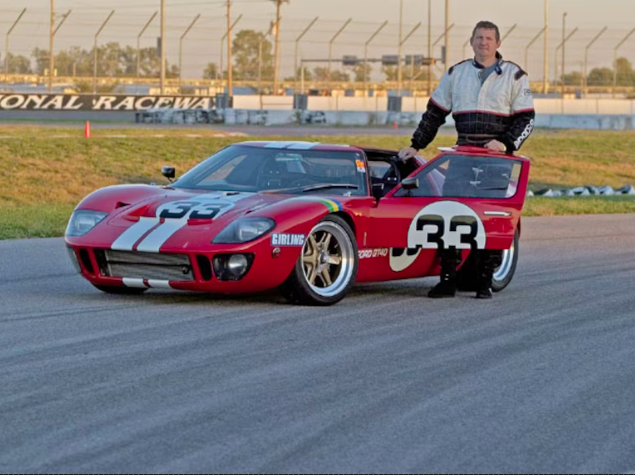
#1083 RebornI first met Dean Lampe at Mid-Ohio Sports Car Course in June 2006. On my first assignment as the new editor for KIT CAR magazine, I arrived at Mid-Ohio for the second day of track time. The Mid-Ohio event is an unofficial prequel to the London Cobra Show. I arrived a few minutes before the racers' meeting. Afterwards, an aluminum Kirkham Cobra parked near the paddock area caught my attention. There was a tall guy in a racing suit running out to the car. I jogged over there too, introduced myself, and asked, "Has your Kirkham ever been in a magazine?" In his Southern drawl, Dean said something like, "Heck no, I just finished it the other day. This is my first event. But I'd love to have you shoot some pictures and put them in the magazine. It would be an honor."
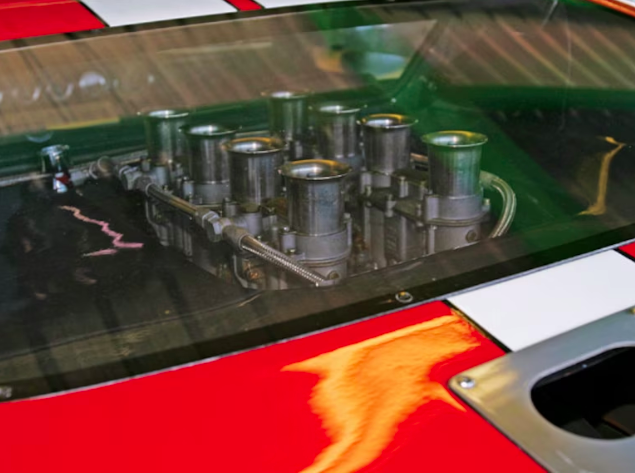
As luck would have it, Dean's #15 Kirkham Sebring 289FIA Cobra replica was my first cover shoot for KC, with a seven-page feature story inside the January '07 issue. When Dean told me a couple months later that he was selling the Kirkham to buy a GT40 kit, I couldn't believe it. The Kirkham was so righteously cool. I thought, "How could anyone commit such a heinous act?" I even tried to figure out a way that I might buy the car. But, I couldn't pony up enough money legally to buy the Kirkham, and I don't have the stomach for being a criminal. So, I gave up the notion and figured maybe Dean had gone crazy.
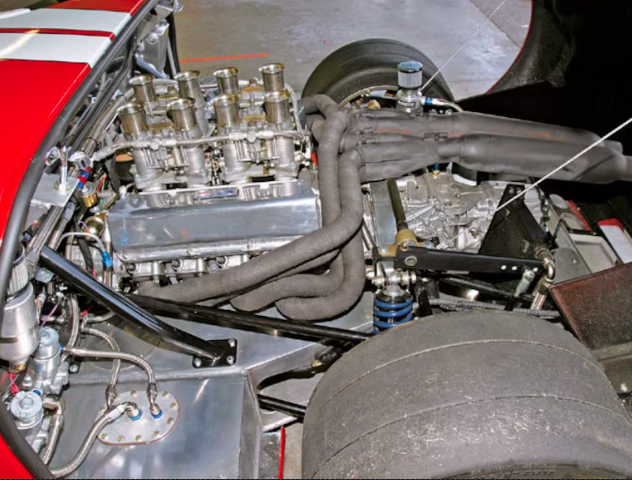
At the 2007 Run 'N' Gun, Dean proved me wrong. He's completely sane. I'd seen his Race Car Replicas RCR40 MkI in photos on www.clubcobra.com. In real life, the race car looks ever so much more stunning than it does in two dimensions. He built it to replicate GT40 MkI #1083, which was the last original GT40 to be built and sold as a completed race car. Since he's the passionate owner and builder, I'll let Dean explain the rest:
"Fran Hall, owner of Race Car Replicas, put a lot of time and research into the design of his GT40. It's a blend of what was best about the original car with the latest technology in automotive engineering. It seems fitting that such a legend in American racing history is built by a company that's just down the street from the largest American auto manufacturers in Detroit. This car is RCR chassis number 33. It was built with three key objectives: to keep all the vintage looks of the original GT40, and have a very competitive track car, yet still be fun to drive to your favorite cruise night. When building a GT40, many people chose an original to replicate. The red No. 33 car is a very close representation of chassis #1083. The original car was finished in the spring of 1969 and sold to a German driver who never took delivery of the car, deciding to purchase a Porsche instead. It was sold to the CAI team in Rio de Janeiro-owned by Sidney Cardoso. It was unraced until world famous Brazilian race car driver, Wilson Fittipaldi, purchased it. As time passed, the car was eventually shipped back to the states in the mid '80s for Adrian Hamilton, who has restored the car and continues to race the historic car at vintage racing venues to this day.
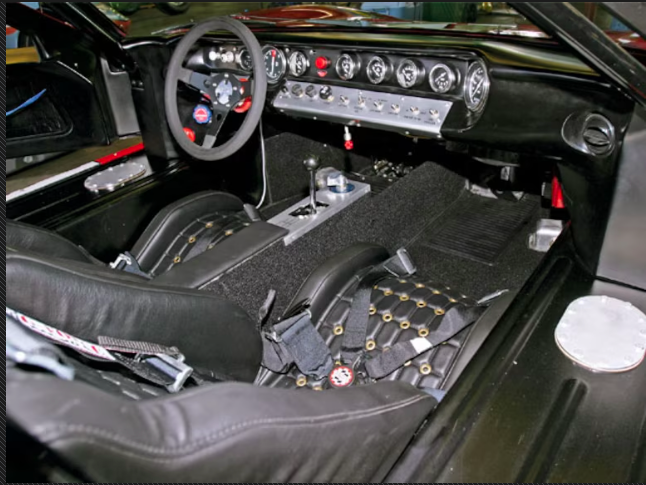
"I want to thank my wife Lisa and my boys Dylan and Reed for their patience and understanding. Sometimes I really tested the limits! The ones who really deserve the credit for the build are people like Lumpy at Performance Motorsports. He took a pile of high-end engine parts and turned them into a true race engine that will turn 9,000 rpm, idle at a stoplight, and still run on pump gas. He taught me that fast is not only about horsepower. Morris Clement, a three-time national SCCA champ, continues to coach me on chassis setup and driving skills. He has taken more time off my laps than anyone, because he knows how to teach and he truly cares about the promotion of our sport. Mike Meyer did an amazing job on the very complicated bodywork and continues to touch up my "dings" after every event. Joe and Mike Cooksey, owners of a very successful ARCA/BUSCH series racing team, really took the time to turn my car into a race car. From bumpsteer to shock valving, these guys are the best! And finally a special thanks to my best friends Craig Mayer and Clois Harlan for all of their help."
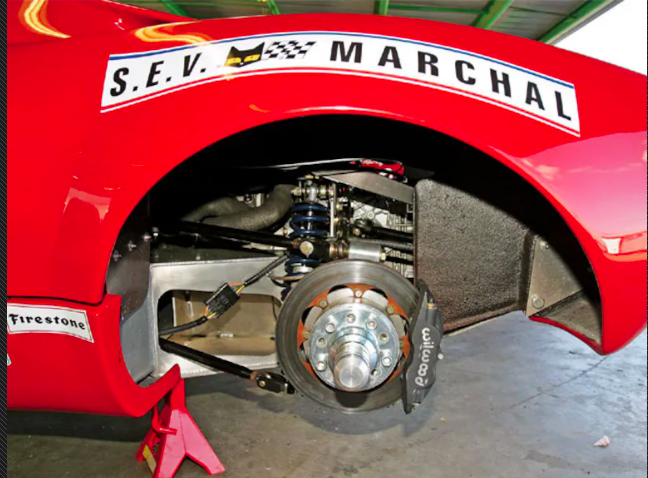
"This is one of the first RCR GT40s to hit the track. The car debuted at this year's Run 'N' Gun event held in St. Louis, Missouri. With less than 20 miles showing on the odometer, the car posted the fastest times on the road course in the Small-Block Pro division and ran with the fastest cars in the chase for the overall road course 'Top Dog.'
"Almost 40 years have passed since Wilson Fittipaldi took delivery of the original GT40 chassis #1083. I think if he would have been at Run 'N' Gun this year he would have had flashbacks to the glory days of his racing career and would have been proud to see "his car" blasting down the front straight at over 150 mph, and then effortlessly cut into Turn 1 to chase down the next victim.
Dean and Ray, thanks for giving KIT CAR the opportunity to feature your fantastic RCR40s in the magazine. We also greatly appreciate your telling us about your cars in your own words. Your passion for the phenomenal Ford GT40s in general and your RCR40s that replicate #1075 and #1083 in particular is an inspiration to all kit car hobbyists. After learning of your tales of triumph, our readers will be compelled to spend a bit more time in the garage and get their kit cars finished for that next big event.
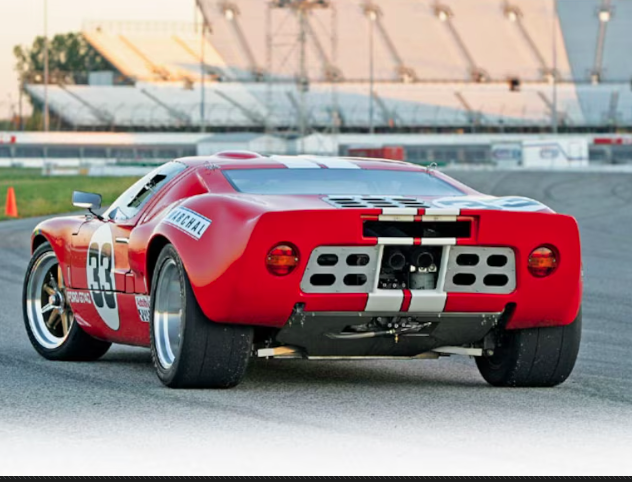
#1075 Reborn Facts BoxVehicle Manufacturer InfoRace Car ReplicasClinton Township, Michiganwww.race-car-replicas.com
#1083 Reborn Facts BoxVehicle Manufacturer InfoRace Car ReplicasClinton Township, Michiganwww.race-car-replicas.com
Owner Info Dean LampeCentralia, Illinois
| VEHICLE | |
| Year and type/model: | RCR40 MkI replica of 1969 GT 40 MkI (#1083) |
| PRICING | |
| Price of Kit: | $48,000 |
| Total Price as Completed: | A lot more than that! |
| Owner's Estimate of Hours to Build/Complete | |
| Vehicle: | 1,100 hours |
| CHASSIS | |
| Frame: | TIG-welded polished aluminum monocoque |
| Wheelbase: | 95" |
| Rearend: | ZF transaxle |
| Rear Suspension: | Fully adjustable billet spindles and arms, Corvettebearing assemblies |
| Front Suspension: | same as above |
| Shocks: | QA1 dual adjustable with Hypertech coilover springs. |
| Rear Brakes: | Wilwood four-piston Dynalite calipers with Hawk Blue pads, custom hats with 1.25" thick NASCAR rotors. |
| Front Brakes: | Wilwood six-piston billet calipers with Hawk Blue pads, same hats and rotors |
| Brake Lines: | Stainless steel hard lines with braided stainless to the calipers |
| Master Cylinder: | Front—Wilwood 7/8", Rear Wilwood 1" with balance bar and remote adjustment control on the dash |
| Brake Booster: | N/A |
| Steering: | Custom RCR rack with Steeda bumpsteer kit adapted for the GT40 with custom modified steering arm from Cooksey Racing in Centralia, IL, chassis set to less than .009" of bumpsteer per inch of travel |
| 17x8 BRM Vintage wheels with custom powdercoated "Magnesium" gold centers | |
| 17x11.5 BRM Vintage wheels with custom powdercoated "Magnesium" gold centers | |
| Hoosier R6 225/40's | |
| Hoosier R6 315/35's | |
| BODY | |
| Paint Brand/Type: | Ford 2008 Torch Red/Wimbledon White and black pinstripes painted by Mike Meyers, owner of Central City Auto Body |
| Windshield/Glass: | included |
| Rollbar: | Custom six-point cage |
| Lights: | CIBIE headlights |
| Mirrors: | SPA GT/Le Mans series |
| Fuel System: | Dual system race and street. The race system has a 15-gallon tank with a bladder that pumps into a swirl pot that feeds the carburetors and then passes through a bypass regulator from Kinsler Engineering to the swirl pot, where excess fuel can overflow back to the main race tank. The system has three pumps, two 15-gallon tanks, a swirl pot built into the chassis, two inline filters, one canister filter, two Aeromotive check valves, an electric return valve, a bypass regulator and "miles" of braided line all monitored with one fuel level gauge, fuel pressure gauge, and a switch on the dash! |
| Fuel Tank: | sponsoons integrated into the chassis |
| INTERIOR | |
| Gauges: | Classic Instruments, designed by Fran Hall of RCR—tachometer with a 7,500 redline (engine turns to 9,000 but 7,500 is safe!), volts, fuel level, fuel pressure, oil pressure, oil temp (on a switch to monitor both engine and transaxle oil temp), water temp (on a switch to monitor in and out temperature), and a speedometer that goes to 200! The dash has low oil pressure warning lights triggered at 20 psi and low water pressure triggered at 4 psi. Also wired into the armrest are the ignition system controls. These switches allow me to run the timing lock or use a computer controlled timing curve. The driver can also choose to switch a timing retard toggle to reduce timing advance by two, three, or four degrees. This is used in conjunction with the fuel systems and the level of octane in each tank (110 octane in the race system and 93 octane in the street system). |
| Wiring: | Hotwire |
| Steering Wheel: | MOMO steering wheel with billet RCR quick release hub. |
| Seating: | Leather GT40 reproductions |
| Upholstery: | RCR |
| Other: | G Force Pro camlock seatbelts, Phoenix fire suppression system |
| DRIVETRAIN | |
| Engine Brand: | Ford built by Performance Motorsports Systems in Greenville, Illinois. The owner who goes by "Lumpy" is a nationally known circle track engine builder. It was all of his ideas and experience that went into this "ultimate" road race engine. |
| Engine Type: | Ford SVO Aluminum dry sump 302ci block with 8.7" deck, Robert Yates racing heads with titanium valvetrain and spray bars in the vale covers, Jesel shaft rockers, Custom Diamond pistons, billet steel Oliver rods, custom-ground cam from Comp Cams, Billet crank with Honda journals, full set of Clevite bearings, custom three-piece intake from Price Motorsports in Indiana, vintage Italian Weber carburetors, Custom Aviad dry sump GT40 pan, Weaver 5-stage oil pump, Peterson dry sump tank, Setrab oil cooler, McLeod magnum force dual disk clutch with aluminum spoke flywheel MSD Pro distributor |
| Water Pump: | Ford SVO short shaft with Gilmer cog belt pulley |
| Radiator: | Custom aluminum RCR |
| Air Cleaner: | none |
| Ignition: | MSD 6600 box with HVC 6600 coil, MSD programmable timing computer, soft touch rev limiter set for 8000 rpm |
| Headers: | True custom 180 degree 1 7/8" steel ceramic coated Wrapped with DEI header wrap and silicone sealer, Dynomax billet race mufflers Transmission Type: ZF, 4.22 ring-and-pinion |
| Driveshaft: | custom heavy-duty half shafts with Spicer 1350 universal joints |
| Shifter: | Custom Brandwood cable shifter with reverse lock-out |
| Air Conditioning: | Hot Rod Air |
| Battery: | Optima Red Top |
| Engines Brackets: | Billet aluminum from Performance Motorsports |
#1083 Reborn Facts BoxVehicle Manufacturer InfoRace Car ReplicasClinton Township, Michiganwww.race-car-replicas.com
Owner Info Dean LampeCentralia, Illinois
| VEHICLE | |
| Year and type/model: | RCR40 MkI replica of 1969 GT 40 MkI (#1083) |
| PRICING | |
| Price of Kit: | $48,000 |
| Total Price as Completed: | A lot more than that! |
| Owner's Estimate of Hours to Build/Complete | |
| Vehicle: | 1,100 hours |
| CHASSIS | |
| Frame: | TIG-welded polished aluminum monocoque |
| Wheelbase: | 95" |
| Rearend: | ZF transaxle |
| Rear Suspension: | Fully adjustable billet spindles and arms, Corvettebearing assemblies |
| Front Suspension: | same as above |
| Shocks: | QA1 dual adjustable with Hypertech coilover springs. |
| Rear Brakes: | Wilwood four-piston Dynalite calipers with Hawk Blue pads, custom hats with 1.25" thick NASCAR rotors. |
| Front Brakes: | Wilwood six-piston billet calipers with Hawk Blue pads, same hats and rotors |
| Brake Lines: | Stainless steel hard lines with braided stainless to the calipers |
| Master Cylinder: | Front—Wilwood 7/8", Rear Wilwood 1" with balance bar and remote adjustment control on the dash |
| Brake Booster: | N/A |
| Steering: | Custom RCR rack with Steeda bumpsteer kit adapted for the GT40 with custom modified steering arm from Cooksey Racing in Centralia, IL, chassis set to less than .009" of bumpsteer per inch of travel |
| 17x8 BRM Vintage wheels with custom powdercoated "Magnesium" gold centers | |
| 17x11.5 BRM Vintage wheels with custom powdercoated "Magnesium" gold centers | |
| Hoosier R6 225/40's | |
| Hoosier R6 315/35's | |
| BODY | |
| Paint Brand/Type: | Ford 2008 Torch Red/Wimbledon White and black pinstripes painted by Mike Meyers, owner of Central City Auto Body |
| Windshield/Glass: | included |
| Rollbar: | Custom six-point cage |
| Lights: | CIBIE headlights |
| Mirrors: | SPA GT/Le Mans series |
| Fuel System: | Dual system race and street. The race system has a 15-gallon tank with a bladder that pumps into a swirl pot that feeds the carburetors and then passes through a bypass regulator from Kinsler Engineering to the swirl pot, where excess fuel can overflow back to the main race tank. The system has three pumps, two 15-gallon tanks, a swirl pot built into the chassis, two inline filters, one canister filter, two Aeromotive check valves, an electric return valve, a bypass regulator and "miles" of braided line all monitored with one fuel level gauge, fuel pressure gauge, and a switch on the dash! |
| Fuel Tank: | sponsoons integrated into the chassis |
| INTERIOR | |
| Gauges: | Classic Instruments, designed by Fran Hall of RCR—tachometer with a 7,500 redline (engine turns to 9,000 but 7,500 is safe!), volts, fuel level, fuel pressure, oil pressure, oil temp (on a switch to monitor both engine and transaxle oil temp), water temp (on a switch to monitor in and out temperature), and a speedometer that goes to 200! The dash has low oil pressure warning lights triggered at 20 psi and low water pressure triggered at 4 psi. Also wired into the armrest are the ignition system controls. These switches allow me to run the timing lock or use a computer controlled timing curve. The driver can also choose to switch a timing retard toggle to reduce timing advance by two, three, or four degrees. This is used in conjunction with the fuel systems and the level of octane in each tank (110 octane in the race system and 93 octane in the street system). |
| Wiring: | Hotwire |
| Steering Wheel: | MOMO steering wheel with billet RCR quick release hub. |
| Seating: | Leather GT40 reproductions |
| Upholstery: | RCR |
| Other: | G Force Pro camlock seatbelts, Phoenix fire suppression system |
| DRIVETRAIN | |
| Engine Brand: | Ford built by Performance Motorsports Systems in Greenville, Illinois. The owner who goes by "Lumpy" is a nationally known circle track engine builder. It was all of his ideas and experience that went into this "ultimate" road race engine. |
| Engine Type: | Ford SVO Aluminum dry sump 302ci block with 8.7" deck, Robert Yates racing heads with titanium valvetrain and spray bars in the vale covers, Jesel shaft rockers, Custom Diamond pistons, billet steel Oliver rods, custom-ground cam from Comp Cams, Billet crank with Honda journals, full set of Clevite bearings, custom three-piece intake from Price Motorsports in Indiana, vintage Italian Weber carburetors, Custom Aviad dry sump GT40 pan, Weaver 5-stage oil pump, Peterson dry sump tank, Setrab oil cooler, McLeod magnum force dual disk clutch with aluminum spoke flywheel MSD Pro distributor |
| Water Pump: | Ford SVO short shaft with Gilmer cog belt pulley |
| Radiator: | Custom aluminum RCR |
| Air Cleaner: | none |
| Ignition: | MSD 6600 box with HVC 6600 coil, MSD programmable timing computer, soft touch rev limiter set for 8000 rpm |
| Headers: | True custom 180 degree 1 7/8" steel ceramic coated Wrapped with DEI header wrap and silicone sealer, Dynomax billet race mufflers Transmission Type: ZF, 4.22 ring-and-pinion |
| Driveshaft: | custom heavy-duty half shafts with Spicer 1350 universal joints |
| Shifter: | Custom Brandwood cable shifter with reverse lock-out |
| Air Conditioning: | Hot Rod Air |
| Battery: | Optima Red Top |
| Engines Brackets: | Billet aluminum from Performance Motorsports |




